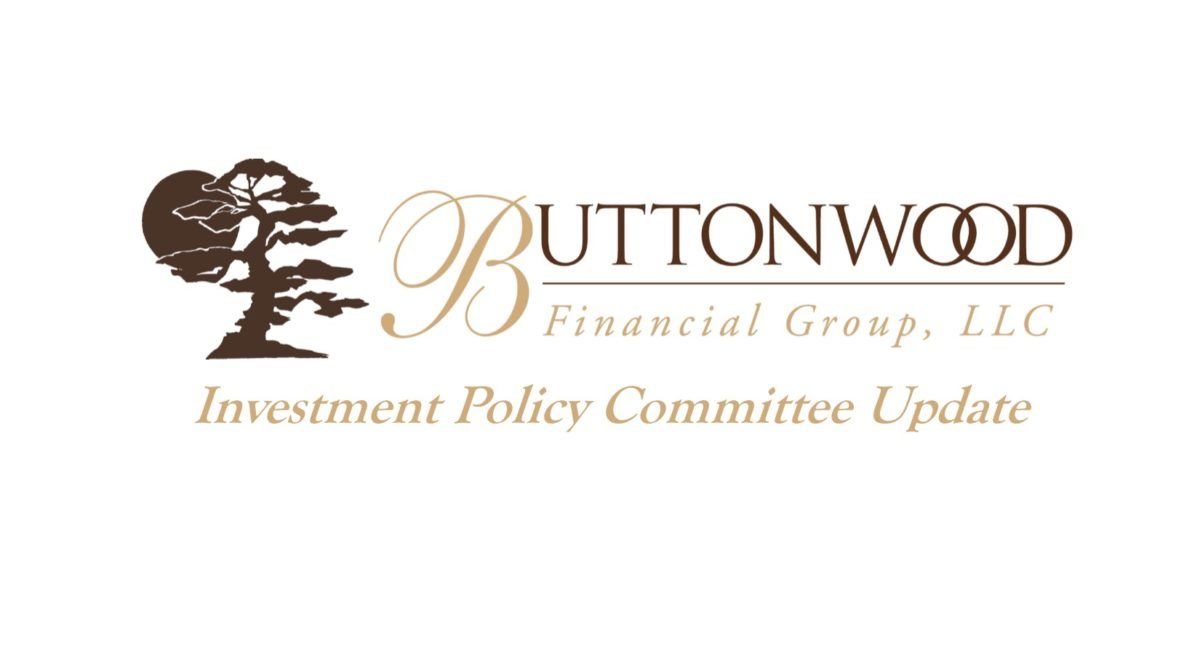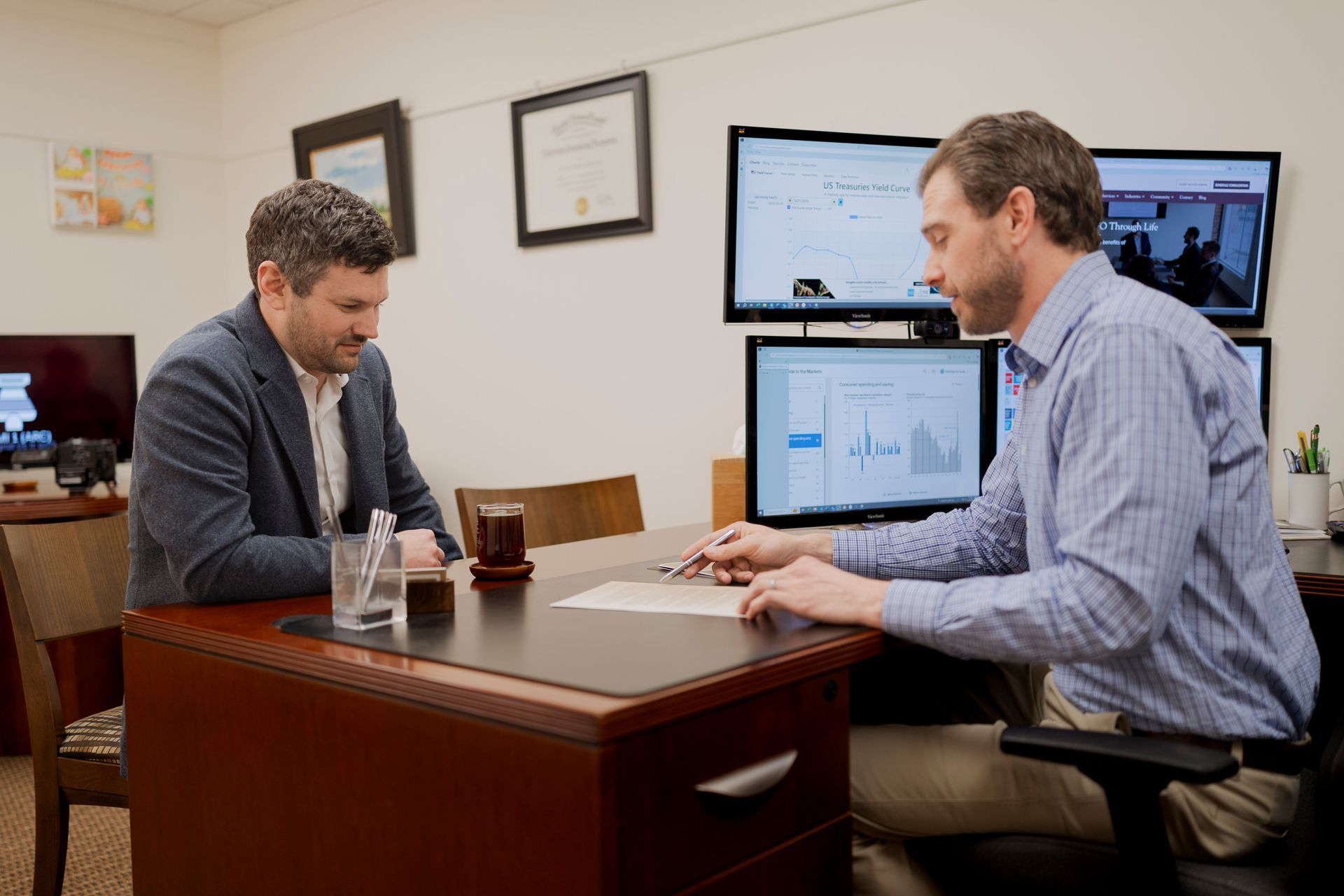Buttonwood Investment Policy Committee Update – September 2020
2020 has certainly presented us with a different world. Today we have kids going back to school during an ongoing pandemic. Couple this with a stimulus fueled stock market near all time highs and thus disconnected from many sectors of the economy. In the near future we will also have major political elections.
Looking at the economy, Gross Domestic Product (GDP – the sum of all the goods and services produced by our Nation) fell 5% in Q1 and a whopping 32% in Q2. To illustrate just how much of an unknown the future holds, as of today, estimates for a rebound in GDP growth for the current quarter range from up 15% to almost 30% – a huge range of possible outcomes. There are strong arguments on both the positive and negative side.
On the positive, most GDP estimates for both Q3 and Q4 are for solid GDP growth. Most economists are also expecting positive economic growth in 2021 and 2022 as well. Unemployment reached a peak of about 15% in Q2 and is now down below 10%. Looking forward, many expect unemployment below 5% by 2023. (while 3 years seems like quite a while, the recovery from 2008-09 took almost 7 years). Residential housing prices are at an all-time high on the back of low interest rates and a flight from city centers. Employed consumers have plenty of cash and are ready to spend, day-trade stocks, and more as savings rates reached levels in excess of 30% in April. Even manufacturing sparked a surprising rebound as the July PMI came in at 54.2%. Add to these positives an unprecedented amount of stimulus from governments around the world, and so far, so good.
On the negative, foreign trade volumes remain challenged with the global scope of the pandemic and generally more protectionist trade policies. Unemployment is still high as we move into the fall flu season and what many expect to be a spike in COVID cases post Labor Day adventures. Travel and tourism sectors are not seeing much of a rebound and many expect it could take years before hotels, airlines, conferences, cruise ships, restaurants and others stage a comeback. These challenges create negative trends for employment in the sector. A number of studies show small businesses are hurting much more than large companies, likely because big companies have access to capital markets. The COVID challenge for big business has followed that of the Government – solve the lack of income problem by issuing billions of dollars of debt.
In July we discussed how we cut through the noise by maintaining a ‘base case’ plan and adapt as new facts surface. One of the reasons for the outsized range of GDP forecasts mentioned above is the wide range of what economists are assuming will happen. For example, many forward looking GDP estimates include the assumption of additional stimulus from Washington, sooner rather than later; material enhancements for faster COVID tests; the release of a vaccine that the world population will actually put into their bodies (there are more than 180 in the works. The NY Times has a Tracker), and very low interest rates into 2023. If any one of these doesn’t come together, look for markets to pivot.
Throughout history the stock market has served as a measure of companies’ ability to earn money by selling goods and services. When interest rates are low, stock prices generally trade at higher multiples of earnings. With more people on the planet consuming more goods and services, the stock markets have traditionally gone up in value about ¾ of the time. When shocks to the widely accepted ‘base case’ occur, assumptions change, and the markets react.
We saw changes as investors awoke to the realization tech stocks were overpriced in the late 1990’s, ‘safe’ mortgages weren’t quite as safe as everyone thought in 2008-09, and today we are trying to work our way out of a pandemic that invoked a worldwide economic lockdown. It is during times like these business hold cash, consumers turn inward and we experience the ¼ of the time corporate earnings contract and stock markets decline. These cycles have been in existence for years and why we watch the economic and business cycles so closely.
Beyond the disconnect between the economy and the stock market, questions about the impact of the November elections are also on investors’ minds. When developing our base case for the election, we focus on the fact that markets do not like uncertainty and will generally react negatively when the unknown happens. With this truth in mind, the one thing we hope to see is that we have an election, and the winner will take office along with others who have also been elected.
Many of the voices today seem to be convinced there is only 1 party that can lead our nation forward. In reality, stock markets have performed well under the leadership of both Republicans and Democrats. Again, history has shown the stock market is driven more by corporate earnings during economic and business cycles than it is by the political party in office. If this was not the case it would be hard for the economy to have grown ¾ of the time.
Where are we today?
Throughout 2020 our theme has been to “participate but defend.” With dramatic market moves, we have been much more active than normal; and so far, this proactive strategy has served us well. In 2019 our base case was set with the idea we were in the later stages of the economic cycle and thus the markets held more downside risk than upside return. Because of our base case of increased risk in the markets, prior to 2020, we had decreased investment risk by shifting to more defensive stocks, selling oil, real estate and junk bonds.
We held tactical cash from December 2019 until March of 2020; the period where the markets fell to adjust for the fact COVID would cause a collapse in earnings. When the markets set a technical bottom in late March, we invested some of the cash. In April, with stocks down, we implemented a series of tax-loss harvest transactions for taxable accounts to reduce tax bills for 2020 and beyond. In early June, as the markets staged a big rebound from the March lows, we executed a full rebalance, once again reducing overall stock exposure and bringing investments back in line with our base case and target allocations.
Fed announcements in July provided an opportunity to reduce our overweight in short maturity bonds and add to high quality bonds with longer maturities. August continued this trend: As rates on money market fell to 0.01%, we reduced cash and added to ultrashort bonds. We also adjusted large cap stock allocations for employer held 401(k) plans, to reflect equal exposure for both growth and value stock sectors.
What’s next?
As the economic and business cycle moves forward, you can expect us to do the same. We continue to regularly review and update our base case. While the S&P 500, with about 30% of assets now concentrated in the 10 largest companies, shows a “V” bottom for the index , as we commented in May , our base case for the economy continues to remain closer to the “U” camp. We believe a full economic recovery from the lockdown is still several quarters away.
The focus of the Buttonwood Investment Policy Committee is to produce a more consistent rate of return over economic cycles. With a more consistent rate of return, we have a much higher probability of projecting future account values and thus cash flows from investments. All this provides for a smoother financial ride through life!
If you have specific questions about our strategy, please let us know and we will make sure to review details at our next meeting. And while we don’t recommend fixating on short term market fluctuations, if you would like to check specific performance of your investments across all your accounts, our Buttonwood Portal is available 24/7. Or you can contact us and we can provide reports specific to your questions and financial life.
Thank you for your continued trust and allowing us to serve as your Family CFO.
P.S. Buttonwood is proud to sponsor the 8 week CHOICES: FOREIGN POLICY ISSUES IN THE 2020 ELECTION series. If you would like to attend one, or all of the remaining sessions, email Macy Layne at Macy@ButtonwoodFG.com and she will gladly save your seat.
P.S.S. Did someone forward this email to you? You are fortunate as they must care about your financial future! Sign up here for regular updates!
The post Buttonwood Investment Policy Committee Update – September 2020 appeared first on Buttonwood Financial Group, LLC.
Recent Buttonwood Articles
Are you ready to explore the benefits of your very own Family CFO?







